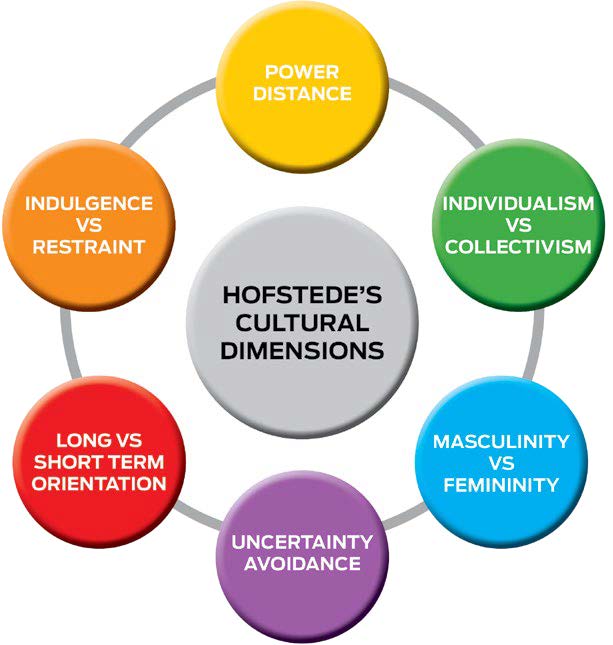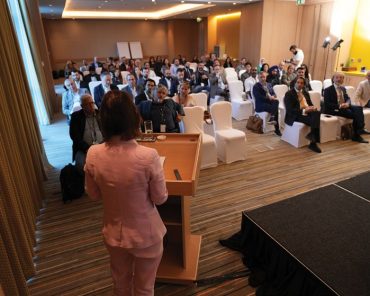Unlock Success In The Middle Eastern Licensing Industry
The Role of Cultural Sensitivity
By Adeeb Alghoufary
Unlock Success In The Middle Eastern Licensing Industry: The Role of Cultural Sensitivity
The Middle Eastern Mosaic: A Brief Cultural Overview Indeed, the influence of the MENA region in the contemporary globalized marketplace is in large part due to its harmonious blend of deep-rooted traditions and economic vitality. Family ties naturally play a large role in regional trade alliances and collaborations. While the economy before the twentieth century was based on agriculture and the control of trade routes, petroleum reserves are responsible for the surge in wealth among many MENA countries, especially those that belong to the GCC. As the region continues to progress in terms of technology-driven innovations and entrepreneurial opportunities, international brands are finding its markets irresistible. One constant is obvious throughout these developments: businesses must understand and adapt to the region’s distinct cultural ethos. In this article, we’ll unpack the intricate business dynamics of the MENA market. This overview is essential reading for representatives of international brands and licensing executives, for we provide insights to help ventures not merely establish a foothold but flourish in the vibrant MENA economy. The Crucial Role of Cultural Sensitivity In the multifaceted commercial landscape of the MENA region, product quality alone is insufficient to guarantee success. No enterprise can flourish here without a deep appreciation for and alignment with the prevailing cultural values. Amid this diverse tapestry of traditions, religious beliefs, and social customs, businesses must tread carefully to avoid missteps that can damage reputations and reduce revenues. An illustrative example in this regard is the challenge faced by Pokémon in 2001 in Saudi Arabia. The brand’s lack of familiarity with or perceived indifference to local concerns—in this case, regarding the supposed promotion of gambling and evolution—led to a ban. Other brands and products can expect to meet the same fate if they are similarly ignorant of local sensibilities.1 Conversely, brands that astutely navigate the cultural landscape by tailoring their campaigns and products to resonate with local traditions and values stand to reap substantial rewards, as KFC’s campaign in association with the UAE’s 47th National Day demonstrates. Employing augmented reality to immerse users in a celebration of national pride, the U.S. firm harnessed the power of technology while remaining respectful of the culture and struck a chord with the members of the community.2

Beyond Avoiding Faux Pas: A Deeper Layer of Cultural Engagement Navigating cultural sensitivities is crucial, but brands achieve true success in the MENA region by immersing themselves in its intricate blend of cultures. Doing so involves going beyond superficial gestures to integrate elements such as local art forms, collaborations with Middle Eastern influencers, and regional motifs and flavors in authentic ways.
The depth of this engagement determines the resonance of a brand’s narrative with its audience, and doing it right naturally requires methodical planning. A valuable starting point for such planning is the framework provided by Hofstede’s six cultural dimensions.3 By offering crucial insights for fine-tuning localization, the Power Distance Index (PDI) elucidates the preference in the MENA region for hierarchical structures. One important consequence of this preference is that the tenor of brand communications must be consistently respectful and authoritative. Likewise, there is a marked emphasis on community in these countries, as evidenced by their low Individualism scores, so campaigns need to highlight collective advantages. Balancing the dimension of Masculinity (assertiveness, competition, material success) vs. Femininity (nurturing, cooperation, quality of life) provides cues for whether marketing should stress regional aspirations or harmonious well-being. The high Uncertainty Avoidance Index (UAI) scores across the region point to the need to cut through the noise with brand messages that are precise and highly coherent. The tendency toward a Short-term Normative Orientation among the region’s consumers underscores the value of weaving historical and religious allusions into brands’ stories. Likewise, a careful balance between indulgence and restraint is important to join societal norms with consumers’ individual aspirations. True localization, then, means much more than merely translating campaigns and promotional materials into new languages. Localization is a holistic journey through cultural intricacies. Brands that astutely assess Hofstede’s dimensions foster positive initial interactions with consumers in the MENA region while working to forge deep connections.

Authenticity as a Cornerstone for Brand Engagement Mention has already been made of the value of authenticity for approaching MENA consumers. Efforts in this regard must be perceived as not simply branding tactics but pledges of genuine interest. Consumers in this market have an uncanny knack for detecting insincerity and shallowness in marketing. Authenticity, then, is both an ethical consideration and a tangible driver of trust, loyalty, and, consequently, market share. The following are some practical steps for cultivating cultural sensitivity in licensing. 1. Collaborate with local experts. A nuanced understanding of local consultants can help brands steer clear of cultural pitfalls and position themselves more authentically. 2. Partner with regional licensing agencies. A hands-on approach involving local agents can provide an insider’s perspective on market preferences so that brands craft strategies in line with cultural inclinations. 3. Develop comprehensive cultural insight. Surface knowledge simply won’t cut it; brands need to become familiar with regional traditions, religious practices, and social norms. Such insight can then inform product launches, marketing campaigns, and broader engagement tactics. 4. Forge strategic local alliances. Fostering ties with regional influencers and established local brands bolsters brands’ credibility while expanding reach. 5. Use active feedback mechanisms. The feedback that brands receive by engaging with local consumers, distributors, and partners is invaluable for maximizing the impact of their campaigns. 6. Empower teams with cultural know-how. By organizing workshops on cultural nuances for their staff members, especially those at the forefront of market interactions, brands can ensure seamless and respectful representation. 7. Provide tailored content. Working with local content creators for marketing collateral, brands can be confident that their marketing efforts are consistent with regional quirks, humor, and sentiments and, therefore, are relatable. 8. Stay informed. Culture is dynamic, so regularly perusing regional publications, attending local forums, and participating in trade events can help brands remain abreast of current trends. By adeptly weaving these steps into the fabric of their strategies, brands can guarantee that their MENA customers will perceive them as authentic and begin building a lasting legacy rather than simply a market presence.
Conclusions The MENA region, with its blend of ancient customs and modern ambitions, offers lucrative opportunities for businesses that understand its cultural intricacies. More than just a market, the region is a nexus of tradition and innovation, and tapping it requires a targeted strategy. Success here hinges on genuine engagement and cultural immersion. The takeaways are clear. Authenticity and cultural precision are paramount. Whether leveraging the insights provided by Hofstede’s dimensions or engaging with local stakeholders, cultural alignment must be the priority. Superficial approaches are doomed to fail, but genuine efforts can unlock unprecedented growth opportunities and a loyal customer base. Overall, then, businesses eyeing the MENA market need to engage deeply, act authentically, and prioritize cultural understanding consistently. Those that take the time to do so will find that the region can provide not only a market but a community in which to thrive.
About the Author: Amer Bitar is an international executive specializing in brand licensing, IP monetization, media, and sports entertainment. As the CEO of Markettcom, a boutique agency focused on brand licensing, he helps global brands expand their presence in the Middle East and North Africa. For information, contact: amer.bitar@markettcom.com
Facebook
Twitter
LinkedIn
Source: Total Licensing 2023 Autumn Edition
By Amer Bitar, Markettcom Ltd CEO
CONTACT
Sheikh Zayed Rd, Rawdat Al Wasl Building, Office 310. Dubai, UAE









